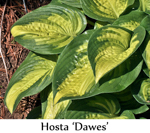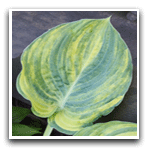 Plant businesses often use certain naming strategies for their
products. Two commonly used tools are Trademarks and Tradenames:
Plant businesses often use certain naming strategies for their
products. Two commonly used tools are Trademarks and Tradenames:
1. Trademarks
- This is used to protect the use of a specific name of a plant.
It does not limit the use of the plant as is the case when a
patent is issued by the U.S. government.
It appears that trademarks may be
employed in two different ways. One is to simply place the
™ emblem at the end of the name. This
tells people that the name is special and belongs to a certain
organization or person. However, doing this is not the most
powerful way of seeking protection.
The second approach is to make a
formal application to the government which will provide a
registered trademark that has more legal standing. In this case,
names would be followed by the ®
symbol.
2. Tradenames
- A tradename is a name that someone decides to use in place of
a cultivar's name for marketing purposes. Sometimes it is part
of the patent application process but in others, someone merely
makes up a new name for an established cultivar. Tradenames are
formatted in all-capital letters with no other punctuation such
as H. BIG LETTERS BLUE.
 According to articles in
The
Hosta Journal, this can, at times, be a controversial
practice. There are several reasons to adopt a tradename for a
hosta cultivar. It might be that the nursery just wants to have
a unique, attention grabbing handle for the plant. However, it
appears that some sources are using tradenames to convince
people that an older, established hosta is actually something
NEW.
According to articles in
The
Hosta Journal, this can, at times, be a controversial
practice. There are several reasons to adopt a tradename for a
hosta cultivar. It might be that the nursery just wants to have
a unique, attention grabbing handle for the plant. However, it
appears that some sources are using tradenames to convince
people that an older, established hosta is actually something
NEW.
This can be especially troubling
when the hosta is actually registered with The American Hosta
Society under a very different name. Are people being deceived
into purchasing something they already have in their gardens
just because it has been given another name?
We have listed several
Tradenames/Trademarks
used for hostas in our database.



